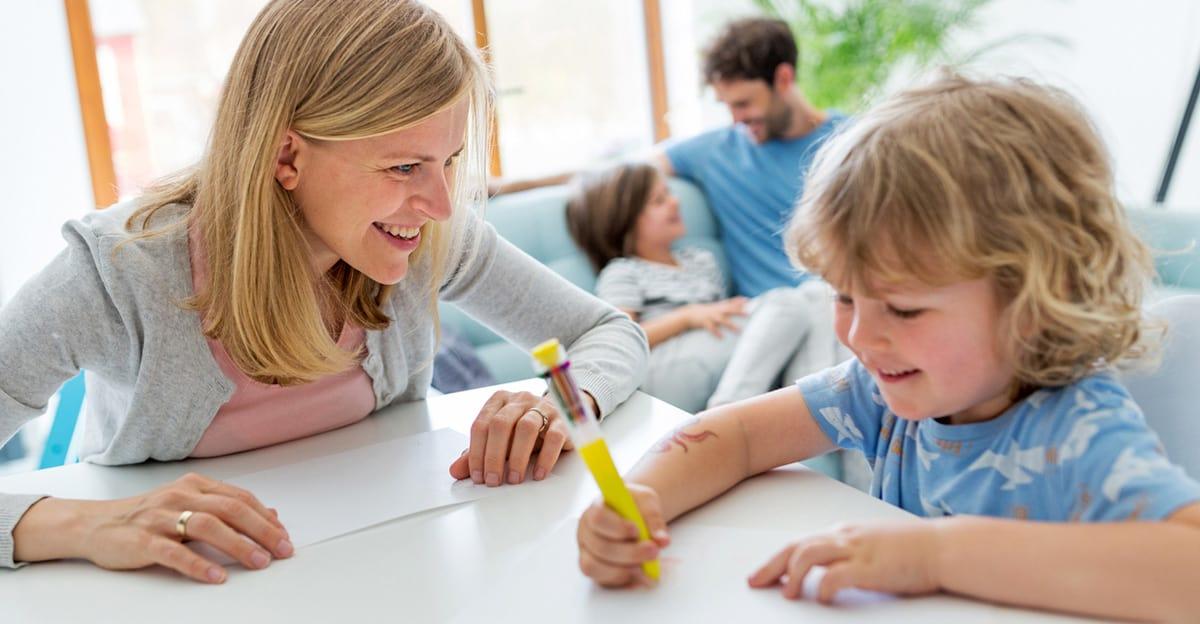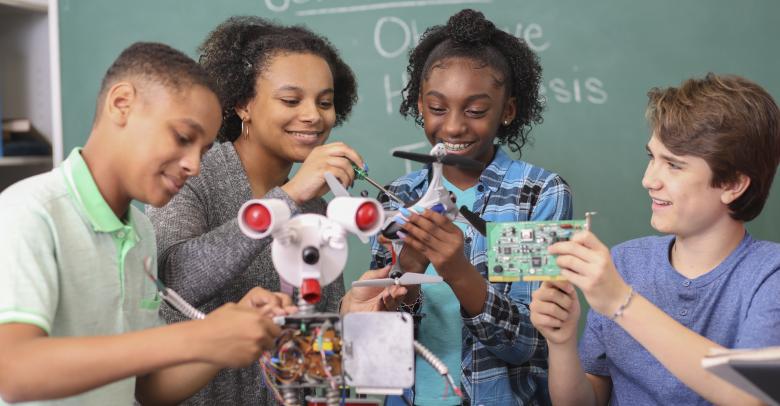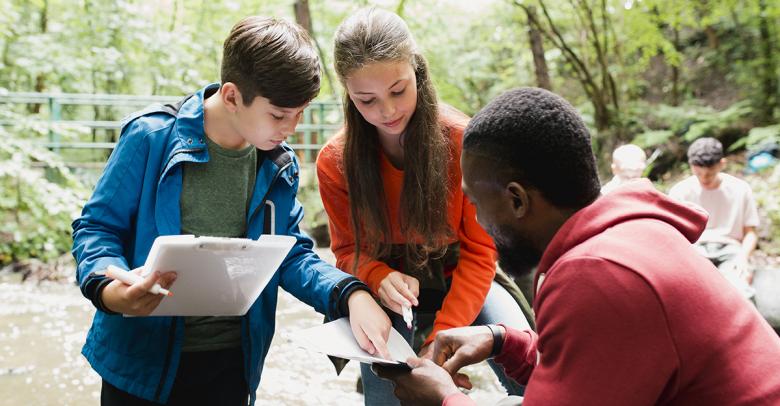When children learn to code, they are not just focusing on computer science skills, they are learning specific 21st-century skills like problem-solving, critical thinking, creativity, and communication. There is a big concern with teaching children to code as some families are worried about the amount of screen time their children will get. There are many activities that can introduce foundational coding skills without requiring any screen time. Check out some of these fun activities you can do at home.
Making Your Lunch Step-by-Step
Have children write out the steps that they would follow to make their lunch. If they are warming up soup, how would they start? Once they have written out all the steps as best they can, have them pass their instructions to another member of the household to follow. They must follow the instructions exactly. For example, if the child has written “put the soup in the pot,” then the action would be to place the soup can in the pot since the instructions did not tell them to open the jar with the can opener and then pour the soup into the pot. Emphasize that the directions must be followed as they are written. If there is a missed instruction or a step out of order, have the children go back, identify what went wrong, re-write it out, and try again. You can modify this activity for many different things such as tying a shoe, making a bed, or even folding laundry!
Robot Grid
Create a 6×6 grid outside on the sidewalk or driveway. You can use sidewalk chalk or tape it out. Find an object in your house that will be your “robot.” It could be a toy, stuffed animal, cup, or even the TV remote! You will use the following symbols to program your robot to move through the grid.
- Up arrow symbol – moves forward
- Down arrow symbol – moves backward
- Right arrow symbol – turn right
- Left arrow symbol – turn left
For the first activity, you want to get your robot from one corner of the grid to the other diagonally across from it. Ask children what program they would have to write to get the robot to accomplish this task. To level up this activity, place other toys/objects as obstacles in different squares within the grid and have them navigate the robot from one corner to the other. Another activity that you can do with the 6×6 grid is to put numbers (0-9) and letters (A-Z) in each square and have the children write a program to spell out their name, certain sight words, birthdays, and more!
Maze Obstacle Course
This one is done as an obstacle course in your living room, or it could also be done by drawing a maze on a piece of paper if you have limited space. The object of the activity is to have one child write a program to get the other child or family member through the course. If the child’s proposed method doesn’t work, they can analyze, debug, and try again. Have them write out a coding language with symbols to represent up, down, around, over, under, left, right, and then ask them to come up with any more symbols that they will need to complete the course. Children can write or draw out their program on a piece of paper or line up each symbol and point to it to show the family member how to move.
Coding is a valuable skill to have in today’s world and helping children learn the foundational aspects will empower them. If you don’t have access to a device or are concerned about too much screen time, everyday items in the house can be transformed in a fun way to teach coding basics.
Naomi Hartl
Naomi Hartl graduated from the University of Saskatchewan and started teaching in her home province of Saskatchewan, Canada. She has taught a variety of subject areas including biology, mathematics, health education, physical education, home economics, and career education. In 2015, she relocated to Oregon, USA, to work with School Specialty and has worked in curriculum development and writing with the company and is now the Science and STEM Subject Matter Expert. Working with School Specialty has allowed her to pursue her dream of making a difference in the lives of teachers and students by curating solutions to create safe, equitable, and successful learning programs.
Read more by Naomi Hartl–>







Leave a Reply